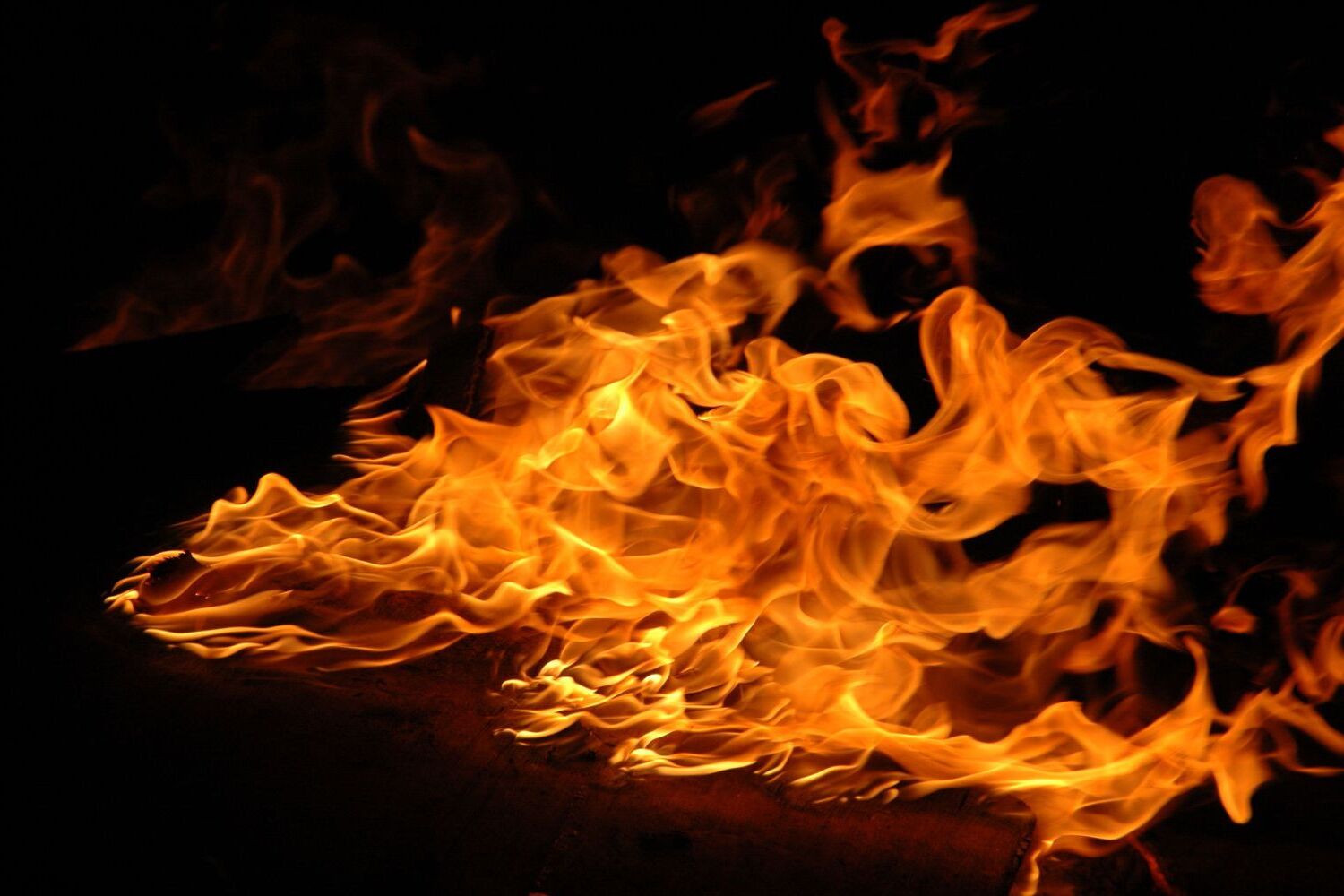
Firefighters are everyday heroes who risk their lives to save others. But how much do you really know about them? Did you know that firefighters not only battle blazes but also respond to medical emergencies, car accidents, and even rescue pets? They undergo rigorous training, often spending over 600 hours learning how to handle various emergencies. Firefighting isn't just about strength; it requires quick thinking and teamwork. From the history of firefighting to the modern gear they use, there's a lot to uncover about these brave individuals. Ever wondered why fire trucks are red or how fire stations operate? Let's dive into 50 fascinating facts about firefighters that will give you a new appreciation for their incredible work.
The Basics of Fire
Fire has fascinated humans for centuries. It’s a powerful force of nature that can both create and destroy. Here are some fundamental facts about fire.
- Fire is a chemical reaction called combustion, which requires heat, oxygen, and fuel.
- Flames are the visible part of the fire, produced by the burning gases.
- Fire can exist in different colors, depending on the substances burning. For example, copper produces a green flame.
- The hottest part of a flame is the blue part, which can reach temperatures of around 1,400 to 1,650 degrees Celsius.
- Fire needs a continuous supply of oxygen to keep burning. Without it, the fire will extinguish.
Historical Significance of Fire
Fire has played a crucial role in human history. It has been used for warmth, cooking, and protection. Here are some historical facts about fire.
- Early humans discovered fire around 1.7 to 2 million years ago.
- The control of fire was a significant milestone in human evolution, allowing for cooked food, which is easier to digest.
- Ancient civilizations, like the Greeks and Romans, used fire for religious rituals and ceremonies.
- The Great Fire of London in 1666 destroyed much of the city but led to significant changes in building regulations.
- Fire has been used as a weapon in warfare, such as the Greek fire used by the Byzantine Empire.
Fire in Nature
Fire is not just a human tool; it also occurs naturally and plays a vital role in various ecosystems. Here are some natural fire facts.
- Lightning is a common natural cause of wildfires.
- Some plants, like the lodgepole pine, rely on fire to release their seeds.
- Fire can help clear dead vegetation, making room for new growth.
- Certain animals, like the Australian fire hawk, use fire to flush out prey.
- Volcanic eruptions can cause fires by igniting surrounding vegetation.
Fire Safety and Prevention
Understanding fire safety is crucial to prevent accidents and save lives. Here are some important fire safety facts.
- Smoke alarms can reduce the risk of dying in a house fire by nearly half.
- Fire extinguishers are classified by the type of fire they can put out, such as Class A for ordinary combustibles and Class B for flammable liquids.
- The "Stop, Drop, and Roll" technique is essential for putting out flames on clothing.
- Fire drills in schools and workplaces help prepare people for emergencies.
- Sprinkler systems can control or extinguish fires before the fire department arrives.
Firefighting and Firefighters
Firefighters are heroes who risk their lives to save others. Here are some facts about firefighting and firefighters.
- The first organized municipal fire brigade was established in Edinburgh, Scotland, in 1824.
- Firefighters wear protective gear made of fire-resistant materials to withstand high temperatures.
- Fire trucks carry various tools, including hoses, ladders, and axes, to fight fires and perform rescues.
- Firefighters undergo rigorous training to handle different types of emergencies, not just fires.
- The Dalmatian dog is often associated with firehouses due to their historical role in guiding horse-drawn fire engines.
Fire in Culture and Mythology
Fire has a significant presence in various cultures and mythologies around the world. Here are some intriguing cultural and mythological fire facts.
- In Greek mythology, Prometheus stole fire from the gods and gave it to humans.
- The Hindu festival of Diwali celebrates the victory of light over darkness with numerous firecrackers and lamps.
- The Olympic flame is a symbol of the ancient Greek tradition, representing the theft of fire from the gods.
- Firewalking, practiced in various cultures, involves walking barefoot over hot coals as a test of faith or endurance.
- The Phoenix, a mythical bird, is said to burst into flames and be reborn from its ashes.
Fire Science and Technology
Advancements in science and technology have improved our understanding and management of fire. Here are some scientific and technological fire facts.
- The fire triangle consists of three elements: heat, fuel, and oxygen. Removing any one of these will extinguish the fire.
- Fire retardants are chemicals used to slow down or stop the spread of fire.
- Infrared cameras can detect heat signatures, helping firefighters locate hotspots in a burning building.
- The study of fire dynamics helps scientists understand how fires start, spread, and can be controlled.
- Fire-resistant materials, like asbestos and certain ceramics, are used in construction to enhance safety.
Fun and Unusual Fire Facts
Fire can be both fascinating and fun. Here are some unusual and entertaining fire facts.
- Fireworks were invented in China over 2,000 years ago.
- The world’s largest bonfire was built in Norway in 2016, standing over 47 meters tall.
- Fire whirls, also known as fire tornadoes, occur when intense heat and turbulent wind conditions combine.
- The "eternal flame" at the John F. Kennedy Memorial in Arlington National Cemetery has been burning since 1963.
- Some species of fungi, like the Pyronema, thrive in post-fire environments.
Fire in Modern Life
Fire continues to play an essential role in modern life, from cooking to industry. Here are some modern fire facts.
- Gas stoves use controlled flames for cooking, providing precise temperature control.
- Fireplaces remain popular for heating homes and creating a cozy atmosphere.
- Industrial processes, like metalworking and glassblowing, rely on high-temperature flames.
- Controlled burns are used in agriculture to manage land and improve soil health.
- Fireworks displays are a staple of celebrations worldwide, from New Year's Eve to Independence Day.
Fire and the Environment
Fire impacts the environment in various ways, both positively and negatively. Here are some environmental fire facts.
- Wildfires can release large amounts of carbon dioxide, contributing to climate change.
- Fire can help maintain the health of certain ecosystems by clearing out invasive species.
- Prescribed burns are used to reduce the risk of uncontrolled wildfires.
- Fire can create nutrient-rich ash that benefits plant growth.
- Smoke from fires can affect air quality, posing health risks to humans and animals.
Fireflies: Nature's Tiny Marvels
Fireflies, with their bioluminescent glow, captivate us every summer. These tiny insects use light to attract mates and ward off predators. Their flashing patterns vary by species, creating a unique light show. Fireflies are more than just pretty lights; they play a crucial role in ecosystems by controlling pest populations. Sadly, habitat loss and light pollution threaten their existence. Simple actions like turning off outdoor lights can help protect these fascinating creatures. Fireflies remind us of nature's wonders and the importance of conservation. Next time you see a firefly, take a moment to appreciate its glow and the intricate world it represents. By understanding and protecting fireflies, we ensure future generations can enjoy their magical displays. Let's cherish these natural marvels and work together to preserve their habitats.
Was this page helpful?
Our commitment to delivering trustworthy and engaging content is at the heart of what we do. Each fact on our site is contributed by real users like you, bringing a wealth of diverse insights and information. To ensure the highest standards of accuracy and reliability, our dedicated editors meticulously review each submission. This process guarantees that the facts we share are not only fascinating but also credible. Trust in our commitment to quality and authenticity as you explore and learn with us.


